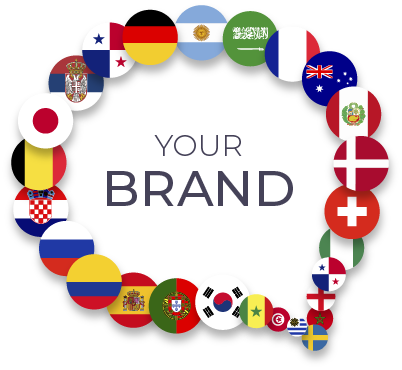Translation is an essential part of business

Marketing helps businesses grow by increasing a brand’s visibility and establishing a recognisable presence in consumers’ minds.
There are several ways for marketing to impact your target audience and to raise their awareness regarding the benefits your company has to offer.
With so many advertising options available nowadays, you need to find ways to market your business that are both affordable and result-oriented. And this is where translation comes in.
There are several marketing strategies that can be more efficient if you implement translation as a key component.
Translation in Advertising
There is a common misconception that translation is only used in web content marketing; however, it can also be used in advertising. When you market your product or brand on a global scale, you realise that many of the channels available only display content in the local language.
Translation will allow you to reach a larger target audience and increase your brand’s visibility.
Translation can also help you create targeted advertising campaigns, specifically geared towards your target audience’s needs.
Targeted advertising can increase a brand’s awareness and bring new customers to your business.
In the current climate, translation is not an option; in fact, it is an obligation for any business seeking international expansion.
By translating your advertisements, you can create specific ads that meet your target audience’s needs and realities.
With targeted ads, you have the chance to increase your brand’s awareness and bring new customers to your business.
Marketing in Platforms that Require Translation
If you have a social media presence (e.g., Facebook, Instagram or Pinterest), in platforms with a global reach which often feature multilingual content, translation is going to help you reach a broader audience.
You can also use translation to reach your target audience in platforms other than traditional social media ones, such as blogs, websites and apps.
If you decide to market using social media platforms in a different language, you will be able to use translation to create content in those languages. For example, if you market in a Spanish platform, you will have to create your ad in Spanish. This is commonly known as ‘native advertising’.
Content marketing with translation
Content marketing is a type of marketing which consists in the development and distribution of content to consistently attract and retain an audience. Companies can create several types of content, such as videos, podcasts, e-books, blogs and even newsletters.
Content marketing is an affordable approach to generate leads and increase your revenues. However, if you choose not to create content in your target audience’s language, this strategy is highly unlikely to be successful. By implementing translation in your content marketing strategy, your content will be more efficient.
You can also use content marketing to advertise products or services that are already available in other languages. For example, you can create e-books in various languages and distribute them to your target audience.
Integrate offline and online marketing strategies
In online marketing, these strategies can be used to reach your target audience, and they can focus your efforts on offline marketing strategies. Both marketing strategies are extremely efficient separately; however, if you combine them, you can increase your return on investment. By merging both online and offline marketing strategies, you can reach your target audience more broadly by addressing them in their preferred language.
You can also create marketing materials in various languages, such as brochures, pamphlets, and posters, thus making your product or brand more accessible to those who prefer to read or access content in their mother tongue.
Translating your product descriptions
Your product descriptions are a crucial part of the sales process. If those descriptions are not made available in your target audience’s language, your sales are highly likely to be unsuccessful. To fight this, make sure your product descriptions are in your target audience’s language. In order to do that, you just have to translate the descriptions that are in another language to your target audience’s language.
Sales and translation
The motto of sellers, either of products or services, is to increase sales as much as possible. To achieve that, you have to attract as many potential customers as possible. Even when your target audience knows English, there are still opportunities to increase your sales by resorting to translation.
Since the beginning of e-commerce in the early 90s, the digital marketplace has become a global industry worth more than 265 billion euros, with China, the UK and South Korea having the largest share of e-commerce, when compared with total sales (https://www.insiderintelligence.com/content/countries-retail-ecommerce).
Did you ever visit a website and find its content difficult to understand? This happens because the website was poorly translated or written, or because it is not even available in your mother tongue. This happens often, even with local companies.
So how can you make sure that you are using your website efficiently to reach your clients? How can you guarantee that your customers understand the content and information on your website?
The answer is simple: by resorting to translation services.

